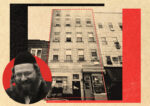Some owners of homes built around golf courses are getting their hands dirty in order save their property values from tanking with closing, deteriorating greens.
Developers nationwide have built thousands of residential communities around golf courses since the 1980s, but many have closed due to an excessive supply of courses and a decline in the popularity of golf, the Wall Street Journal reports. Nearly 2,000 golf courses across the country closed in the 2006-2018 period, according to golf industry monitor Pellucid Corp.
In response, many residential communities have launched costly and time-consuming efforts to revive closed golf courses, but success is hardly guaranteed.
Consider Michael Hardy, 68, a retiree who paid approximately $1 million in 2007 to build a house that overlooks the 17th hole of a golf course in Shellman Bluff, Georgia. Now, Hardy not only plays golf there but also works with neighbors to maintain the course.
He and his neighbors acquired and reopened the money-losing Sapelo Hammock Golf Club in Shellman Bluff after it closed in 2010. They worked for months to remove weeds and brush, then hired staff to run the golf course. But neighbors still gather about twice a month to help with course maintenance, according to Hardy.
In the case of homeowners who lived around Heather Ridge Country Club in Aurora, Colorado, a group of residents banded together to prevent the club’s redevelopment, which they feared would eat into their property values.
They eventually created the Heather Ridge Metropolitan District, a quasi-governmental entity that issued municipal bonds to acquire the golf course in 2009 for $3.1 million and manage subsequent upgrades.
But one resident, Van Lewis, told the Journal that the effort to convince non-golfers that reviving a golf course would lift property values “was like we were selling Tupperware.” [WSJ] – Mike Seemuth




